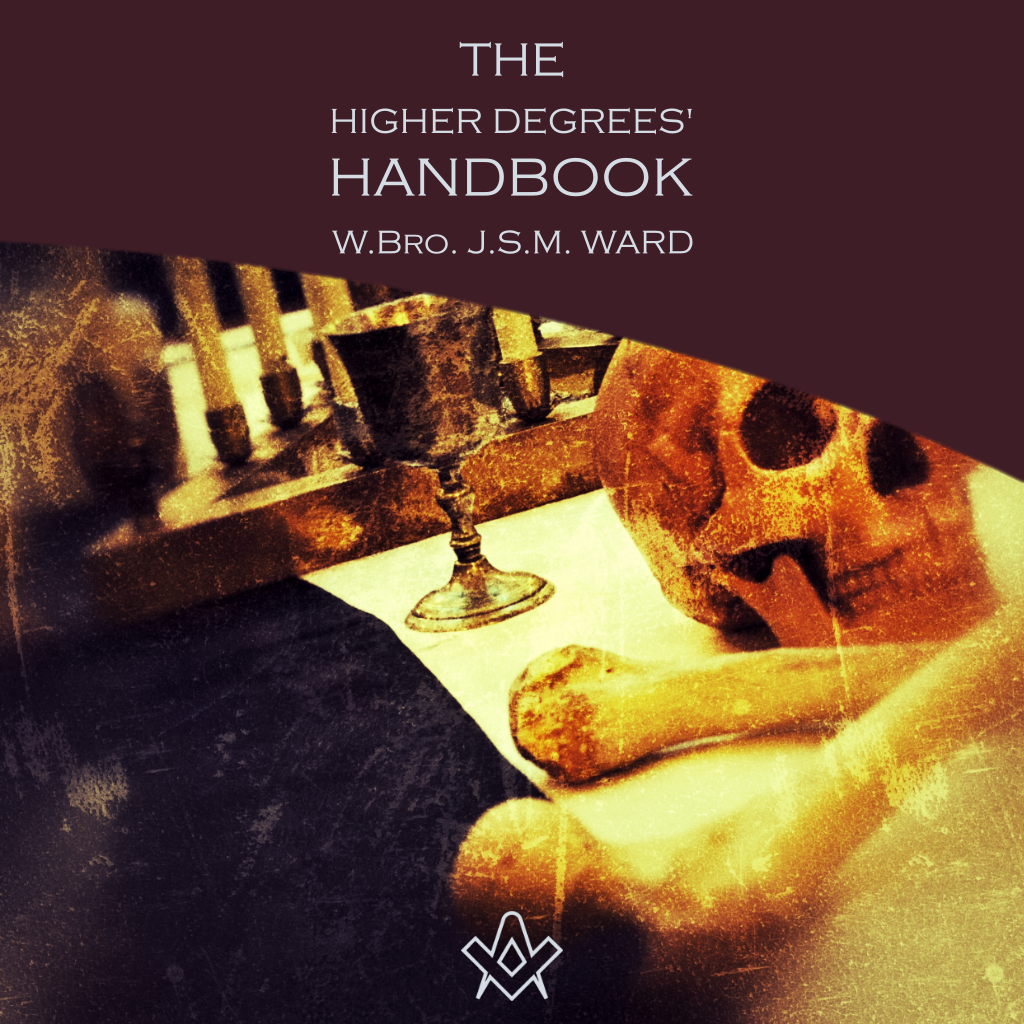In attempting to give an outline sketch of the various degrees in Freemasonry in a book of this description, I am faced by many difficulties, not the least of which is how to write in an interesting way about degrees, which many of my readers have not taken, without giving away more than is permissible.
Extracted from The Higher Degrees’ Handbook by JSM Ward
One of my reasons for writing this book is to encourage Brethren to take these ‘Advanced Degrees.’
We still meet Brethren who say that there is nothing beyond the Craft worth taking.
As one who has taken all the degrees for which he is qualified, I can state from personal experience that, with one or two small exceptions, practically all the degrees are of the greatest value.
Of course, my readers must bear in mind that a Brother gets out of Masonry in proportion to what he brings into it.
If he approaches it with a keen intellectual mind, based on a reasonable amount of study of the meaning of symbolism, he naturally will learn far more than if he approaches it merely from the point of view of a man who knows a good dinner when he eats one, and cares nothing about the meaning of the ceremonies which take place in the Lodge Room.
HISTORICAL SURVEY
The early history of the so-called ‘Higher Degrees’ is even more obscure than that of the Craft, and in consequence a tendency has grown up to regard them as ‘Manufactured’ during the 18th century.
In my opinion this is too hasty a conclusion, for some of these degrees at any rate bear every evidence of antiquity, and contain that wisdom which has been handed down from generation to generation.
The third degree clearly foreshadows a subsequent degree, wherein the lost secrects will be finally recovered, in fact without such a degree the whole of the Craft ceremonies would be meaningless.
Moreover, as we shall show later, the most important Higher Degrees use signs of great antiquity, which have been clearly handed down from ancient days in precisely the same way as have our Craft signs, of which full evidence has been given in the History Handbook.
There is also documentary evidence to show that the legends of some of these degrees were well known by our medieval ancestors, and actually incorporated in the Ancient Charges.
As, for example, the two pillars which were set up before the flood, survived that deluge, and were subsequently re-discovered by masons.
This legend forms the theme of the 13th degree of the Ancient and Accepted Scottish Rite which is called the Royal Arch of Enoch.
The earliest printed references to any of the Higher Degrees are to the Royal Arch in 1741, and to the Royal Order of Scotland in 1743, when it was in such a vigorous state of health that it had a Provincial Grand Lodge in London, with at least two Chapters under its control.
The Higher Degrees appear to fall into three main groups:
(l) Those that extend the story of the Craft
(2) Those which purport to restore the lost secrects
(3) The Chivalric Degrees.
With regard to the first group two tendencies seem to have been at work during the 18th century.
The one being to cut out of the Craft various parts of the legend, and the other being to enlarge certain incidents referred to in the Craft stories, add picturesque detail, and evolve out of them a new degree.
My own conviction is that the root matter of nearly all the Higher Degrees comes from traditions and legends cherished by our medieval predecessors.
There is no doubt that all our rituals, the Craft included, underwent considerable revision during the 18th century.
In the case of the Craft Degrees a considerable amount of excision was necessitated by the alteration of the clause in the constitution which changed Masonry from a Christian to a non-Christian basis.
This process of excision of all Christian references was not completed until the time of the Treaty of Union, in 1813, and one example for England will suffice.
Dunckerley, in the second half of the 18th century, declared that the ‘Blazing Star’ meant the star at Bethlehem which guided the wise men to the infant Christ.
In Scotland to this day there still survives a distinct reference to the Christ in the Craft Degrees, for the V.S.L. is opened by the D.C. with a quotation from the opening verse of the gospel of St. John, – ‘In the beginning was the Word,’ – whilst the Lodge is closed with the following quotation from the same source, ‘And the Word was with God.’
Now this clearly indicates the existence of a Christian explanation of the lost secrects which, though no longer countenanced in the Craft Degrees in England, survives in such degrees as the Rose Croix.
We thus see that anything Christian was eliminated from the lower degrees, and this explains the probable origin of some of the Higher Degrees.
At the same time, the general style of our Craft Rituals has been altered.
Apparently in early days the actual part taken by the candidate during the ceremony was comparatively small, and the bulk of the work consisted of lectures, some parts being by question and answer, while other parts contained various legends connected with the Order.
Gradually the tendency arose to make the candidate take a more active and dramatic part in the ceremony, and in order to do this legends and incidents which did not immediately connect with the main theme began to be dropped.
These parts were prized by the older members, and rather than see them perish they made them into side Degrees, nor are we justified in assuming that they invented the signs to go with these degrees.
In the Royal Order of Scotland to-day the bulk of the ceremony consists of questions and answers put by the Master. to the Wardens, and include the giving of signs at certain points in the catechism, which signs however, are not specifically taught to the candidate.
No doubt when similar portions were cut out and became Christian degrees the signs went with them, and naturally became tests to prove that a Brother had taken this new Side Degree, which was nevertheless in reality very ancient.
A characteristic example of a degree which has been cut out of an existing craft degree is the Mark, which was almost certainly part of the ceremony of a Fellow Craft, although no doubt it has been amplified since it started on its independent career.
On the other hand some of the intermediate degrees of the Ancient and Accepted Scottish Rite, such as the Knights Elect of Nine, are merely amplifications of incidents dismissed in a few words in the Craft ceremony.
The Knights Elect of Nine relates in dramatic form the apprehension of one of the criminals [Ruffians].
To an entirely different order belong degrees like the Royal Arch, the Royal Order of Scotland, and the Rose Croix.
Each of these in its own way claims to be the completing degree, in which the lost secrect are discovered.
The explanation in the case of the last two is Christian, in the case of the Royal Arch non-Christian, whilst their survival indicates the existence of two diametrically opposed traditions.
The Christian Degrees represent the solution put forward in Medieval times, whereas the Royal Arch, though now overlaid with Jewish matter taken from the Old Testiment in the 18th century, has still within it traces of a tradition which goes right back to pre-Christian times, and clearly comes in part from Egypt, and in part from India.
The third group claim to carry on the teaching of the Chivalric Orders of the Middle Ages, and contain evidence of a mystical tradition which was not entirely orthodox.
A characteristic example of these degrees is the Knights Templar.
With regard to these Chivalric Degrees, it may at first sight appear difficult to justify the claim of a building guild to be linked in any way with the proudest Order of Chivalry known to exist in the Middle Ages, but those who hastily brush away this tradition ignore certain salient features of the Templar organisation.
The Templars contained at least three sections, or sub-orders, within their ranks, i.e., the Knights themselves, the Templar Priests, and the so-called Serving Brethren, among whom were many Masons.
When the Order was suppressed thousands of Knights escaped the general persecution, and simply disappeared from history.
How did they do it, and what became of them? The most reasonable explanation is that they disguised themselves as Serving Brothers and Lay Brothers of the Temple, and were shielded by these humbler members of their own Order, who entirely escaped persecution.
I have gone into this question at great length in ‘Freemasonry and the Ancient Gods,’ and will therefore content myself by saying here that there was undoubtedly a link between Masonry and the Templars, which is quite sufficient to explain a partial survival of Templar Rites among the Masonic Brotherhood.
The Templars certainly had a mystical teaching very similar to that enshrined in Freemasonry, and traces of it can still be detected in the present rituals of the Masonic Knights Templar, despite the fact that they have been considerably revised in the last half century .
Article by: J. S. M. Ward
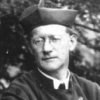
John Sebastian Marlow Ward (22 December 1885 – 1949) was an English author who published widely on the subject of Freemasonry and esotericism.
He was born in what is now Belize. In 1908 he graduated from the University of Cambridge with honours in history, following in the footsteps of his father, Herbert Ward who had also studied in history before entering the priesthood in the Anglican Church, as his father had done before him.
John Ward became a prolific and sometimes controversial writer on a wide variety of topics. He made contributions to the history of Freemasonry and other secret societies.
He was also a psychic medium or spiritualist, a prominent churchman and is still seen by some as a mystic and modern-day prophet.
Recent Articles: J.S.M Ward series

Book Review - The EA, FC, MM Handbooks
Essential reading for every Entered Apprentice, Fellowcraft, and Master Mason - these seminal books by J.S.M Ward are what every Mason needs!
more....
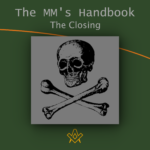 Chapters 9 & 10 The Closing Finally, even if a man can never fathom the full meaning of the third degree, yet there is no man worthy of the name who has passed through that third degree but will certainly have learnt one important lesson, namely, how to die, and thereby will be the better man. |
 Chapter 8 - The Tracing Board - The next part of the narrative is incorporated in most English workings with the Tracing Board. The most interesting feature is the description of the grave. It is obvious that peculiar stress is laid on the centre, even in the present form of our ritual, because of the way in which the measurements are given. |
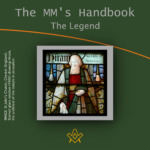 The Master Mason's Handbook P7 Chapter 7 - The Legend - After the ceremonial investiture of the Candidate the W.M. continues the narrative of the traditional history. At least this is the case in most English workings, but in some Scotch workings the whole story is told first, and subsequently the Candidate and the other brethren act the chief parts. Perhaps one of the most important points to realise is the correct meaning of the name Hiram Abiff . |
 The Master Mason's Handbook P6 Chapter 6 - The Badge - On his re-entering the Lodge, the candidate is presented and in due course invested with the badge of a Master Mason by the S.W. The Badge itself, however, is full of symbolic meaning…. |
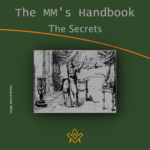 The Master Mason's Handbook P5 Chapter 5 - The Secrets. Having thus been brought into the place of light the Candidate is given not the genuine secrets, but only substituted ones. This fact must often have puzzled the Candidate. The practical reason given in the ritual, though perfectly intelligible to a Royal Arch mason (Companion) , cannot be the real one. |
 The Master Mason's Handbook P4 Chapter 4 - The Exhortation The opening part of the exhortation gives a convenient summary of the previous degrees and quite clearly indicates that the first inner meaning of the series is Birth, Life which is of course educational and preparatory for its sequel, and Death. |
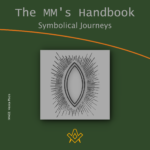 The Master Mason's Handbook P3 Chapter 3 - The Symbolical Journeys; We have seen in the previous books that the square and compasses are united on the pedestal in such a way as to form the Vesica Piscis, the emblem of the female principle, and the symbol of birth and rebirth. Hence symbolically the Candidate passes through the Vesica Piscis. |
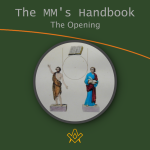 The Master Mason's Handbook P2 Chapter 2 - The Opening; a brief explanation of the teaching of the third degree as contained in the symbols by J.S.M Ward |
 The Master Mason's Handbook P1 Chapter 1 - Questions and Password; a brief explanation of the teaching of the third degree as contained in the symbols by J.S.M Ward |
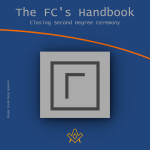 Chapter 6 - Closing Second Degree Ceremony; a brief explanation of the teaching of the second degree as contained in the symbols in the closing part of the ceremony by J.S.M Ward |
 Chapter 5 - The Second Degree Tracing Board; a brief explanation of the teaching of the second degree as contained in the picture of the tracing board according to the ancient mysteries by J.S.M Ward |
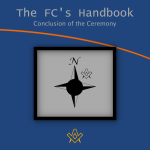 Chapter 4 - Conclusion of the Ceremony; a brief explanation of the North East Corner and the Charge according to the ancient mysteries by J.S.M Ward |
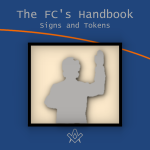 Chapter 3 - The signs and tokens; an explanation of the signs and tokens symbolism of the fellowcraft according to the ancient mysteries by J.S.M Ward |
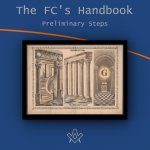 Chapter 2 - Preliminary Steps an explanation of the perambulation and advancement to the east by the winding staircase by J.S.M Ward |
 Chapter 1 - Preparation, past word and opening ceremony - The questions which are put to the candidate are really a test of the lectures, which today, unfortunately, are hardly ever given in open Lodge. |
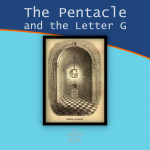 In the centre of the ceiling in every well-decorated Lodge room there should be a pentacle having within it the letter 'G'. |
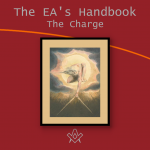 The Entered Apprentices Handbook P7 Chapter 7 - The candidate receives the charge, the first significant point is the phrase "Ancient, no doubt it is, as having subsisted from time immemorial". |
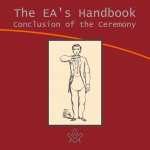 The Entered Apprentices Handbook P6 Chapter 6 - Having taken the first regular step the Candidate is given the Sign. This he is told refers to the Penalty of his Obligation, and no doubt it does, but it also seems to refer to something much more startling. |
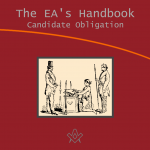 The Entered Apprentices Handbook P5 Chapter 5 - In all the ancient mysteries a candidate obligation was exacted to secure the secret teachings given in these mysteries which disclosed an inner meaning. |
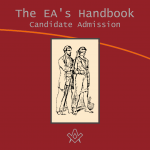 The Entered Apprentices Handbook P4 Chapter 4 - The candidate's admission into the lodge, is received on a sharp instrument. This signifies many things, one idea lying within the other. |
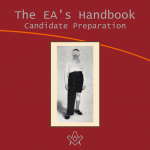 The Entered Apprentices Handbook P3 Chapter 3 - the Candidate being prepared by the Tyler. What we now have is a system by which the parts which have to be bare are made bare. |
 The Entered Apprentices Handbook P2 Chapter 2 - The Tyler or Outer Guard. The first thing that greets the eyes of the aspirant to our Order standing in front of the door with a drawn sword in his hand. |
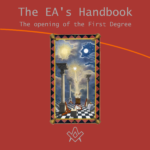 The Entered Apprentices Handbook P1 Chapter 1 - An interpretation of the first degree, the meaning of the preparation, symbolism, ritual and signs. Chapter 1, The opening of the First Degree |
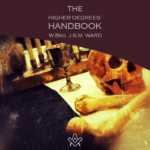 Brief historical overview; Extract from The Higher Degrees ' Handbook by JSM Ward |
Recent Articles: in this series
 Book Intro: The Secret Doctrine Explore the profound synthesis of science, religion, and philosophy in H.P. Blavatsky's "The Secret Doctrine." Discover the true depth of Theosophy beyond the oversimplified term "Esoteric Buddhism" and uncover the universal wisdom that transcends religious boundaries. A compelling introduction to Theosophical literature and its broader, esoteric truths. |
 Book Intro - The craftsman and freemason's guide Dive into the enigmatic world of Freemasonry with Cornelius Moore's comprehensive guide. Uncover the symbolic rituals, trace the fraternity's historical roots, and gain a deeper understanding of this age-old society. Perfect for Freemasons and curious readers alike. Unlock the secrets of Freemasonry today! |
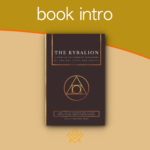 Unravel the secrets of the ancient Egyptian wisdom with our comprehensive guide to the Kybalion, by Three Initiates. Discover its influence on modern thought, the controversies surrounding it, and its seven profound Hermetic principles. Unlock the power of these timeless teachings to transform your understanding of life's mysteries. |
 Book Intro - The Working Tools of an Old York Master by Wilmshurst Unlock the Secrets of Freemasonry! Dive into the profound symbolism of 'The Working Tools of an Old York Master.' Discover the hidden meanings behind the square, compass, plumb line, and more. Embark on a transformative journey of personal growth and spiritual enlightenment. Uncover the ancient wisdom that has shaped generations of Masons. |
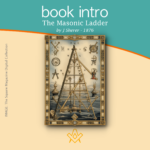 Book Intro - The Masonic Ladder by J Sherer Unlock the mysteries of Freemasonry with "The Masonic Ladder" by J. Sherer - - 1876. This 19th-century guidebook takes readers on a journey through the steps of the Masonic ladder, from the basic principles of the Entered Apprentice to the highest degree of the Sovereign Grand Inspector General. Discover the symbolism, allegory, and values of Freemasonry in this timeless classic. |
 Book Intro - The London mason in the seventeenth century The London Mason in the Seventeenth Century by Douglas Knoop offers a comprehensive examination of the lives and work of masons in the bustling city of London during the seventeenth century. The book delves into the intricacies of their craft, the socioeconomic and political forces that influenced their profession, and the role they played in shaping the architectural landscape of London. |
 Book Intro - History of Freemasonry, Gould, Robert Freke The History of Freemasonry is a comprehensive overview of the origins, development, and evolution of Freemasonry from its ancient roots to the modern era. The book explores the fascinating history of one of the oldest and most mysterious organisations in the world, which has been the subject of much speculation and curiosity over the centuries. - by Robert Freke Gould |
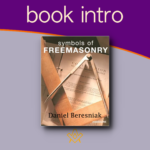 Book Intro - Daniel Beresniak Symbols Of Freemasonry This book is a collection of the symbolic images which Freemasons encounter on their journeys of transformation.' The texts and illustrations form an intimate dialogue whose subject is Freemasonry, and which casts light on the relationship between dreams and reality, reason, intuition and imagination. |
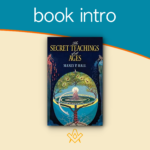 Book Intro - The Secret Teachings of All Ages by Manly P Hall The Secret Teachings of All Ages by Manly P Hall is a comprehensive and in-depth exploration of the various esoteric and occult traditions that have shaped human history. The book covers a wide range of subjects including alchemy, astrology, mysticism, and secret societies, and provides detailed explanations of the underlying principles and concepts. |
 Book Intro - Duncan's Masonic Ritual and Monitor Duncan's Masonic Ritual and Monitor is an impression of the Old York Rite published in New York in 1866. |
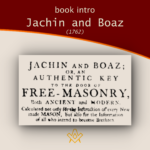 Book Intro - Jachin and Boaz (1762) Thirty two years after Samuel Prichard's Masonry Dissected (1730) a second detailed exposure was published Jachin and Boaz (1762) attributed to the same author, and met with equal distain by Freemasons of the time. However, these exposures offer the masonic historian an invaluable view in to how freemasonry was conducted during its early formation |
 Book Intro - Three Distinct Knocks (c.1760) Giving an exact account of all their proceedings in making a brother, with the three obligations or oaths belonging to the first second, and third degrees of masonry, viz. The entered apprentice, fellow-craft, and master-mason: with the obligating on belonging to the chair, and the grip and word. |
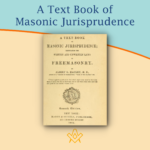 Book Intro - A Text Book of Masonic Jurisprudence An introduction to Albert Mackey's seminal work on Masonic Jurisprudence – the theory or philosophy of Masonic law. The Foundations of Masonic Law are to be found in the Landmarks, or Unwritten Law, and in the Ancient Constitutions, or the Written Law. These constitute the subject matter of the book. |
 Book Intro - The Perfect Ceremonies Of Craft Masonry 1871 A beautiful example of a the rituals, produced in a Medieval illuminated script style. Facsimiles still exist of this illustrated ritual book, of which the most authentically produced version is that available from the Scottish Rite Masonic Book Club. |
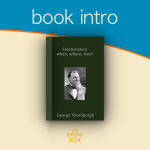 Book Intro – Freemasonry; when, where, how? Introduction to Freemasonry; when, where, how? By George Thornburgh |
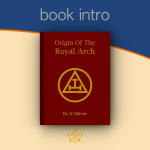 Book Intro - Origin Of The Royal Arch An introduction to the Origin of the Royal Arch, through the eyes of the English nineteenth century masonic author Dr G Oliver (1782–1867) |
 Book Intro – Symbolical Masonry Symbolical Masonry is a treasure-house of Masonic lore, including discussions of key concepts of the first three degrees, along with an extensive study guide. |
 This month we look at – 'A portrait gallery, with biographical sketches of prominent freemasons throughout the United States' |
 Extracted and abridged from The Mystic Tie: Or, Facts and Opinions, Illustrative of the Character and Tendency of Freemasonry By Albert Mackey, |
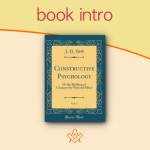 Book intro - Constructive Psychology The introduction to Constructive Psychology or The Building Of Character By Personal Effort by J D Buck a masonic author |
 book intro - Cagliostro: the splendour and misery of a master of magic Preface to the book by William Rutherford Hayes; Cagliostro: the splendour and misery of a master of magic |
 book intro - Origin of the Rosicrucians and the Free-Masons Historico-Critical Inquiry into the Origin of the Rosicrucians and the Free-Masons – Thomas De Quincey |
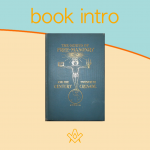 Book Intro - The Genius of Freemasonry The Genius of Freemasonry: “Has any brother anything to offer for the good of Masonry?” The following pages are the author’s answer to that question. |
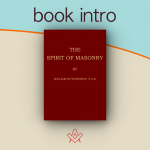 Book Intro - The Spirit of Masonry An essential source for anyone interested in exploring the inner mysteries of the Masonic Fraternity. |
 Book intro - History of Freemasonry Introduction to a classic masonic book by J. G. Findel, History of Freemasonry published 1866 |
 The Book of Constitutions for the Ancient Grand Lodge or Ahiman Rezon |
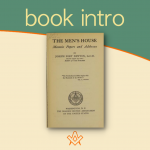 A short introduction to The Men's House, a collection of masonic papers and addresses |
 This is a general survey of Masonic origins, history and philosophy. It was at one time given to every new Mason in Iowa. |
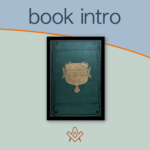 Book Intro - The Discrepancies of Freemasonry Written almost 150 years ago, this book contains wisdom still relevant today. |
 Book Intro - The Principles of Masonic Law "The first great duty, not only of every lodge, but of every Mason, is to see that the landmarks of the Order shall never be impaired". |
 Published in 1911, this fascinating book is equally relevant for the 21st century Mason with an interest in the more mystical side of Freemasonry. |
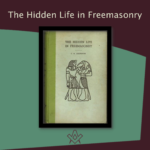 Book Intro - Hidden Life of Freemasonry Introduction to The Hidden Life in Freemasonry (1926) by Charles Webster Leadbeater |
 Book Intro - The Symbolism of Freemasonry Introduction to a classic masonic book; The Symbolism of Freemasonry: Illustrating and Explaining Its Science and Philosophy, its Legends, Myths and Symbols. |
 Book Intro - The Meaning of Masonry This is the Introduction to The Meaning of Masonry, a set of essays which discuss the esoteric side of Masonry |
 Book Intro - Illustrations of Masonry Introduction to Illustrations Of Masonry by William Preston (1742-1818) |
masonic knowledge
to be a better citizen of the world
share the square with two brothers

click image to open email app on mobile device


